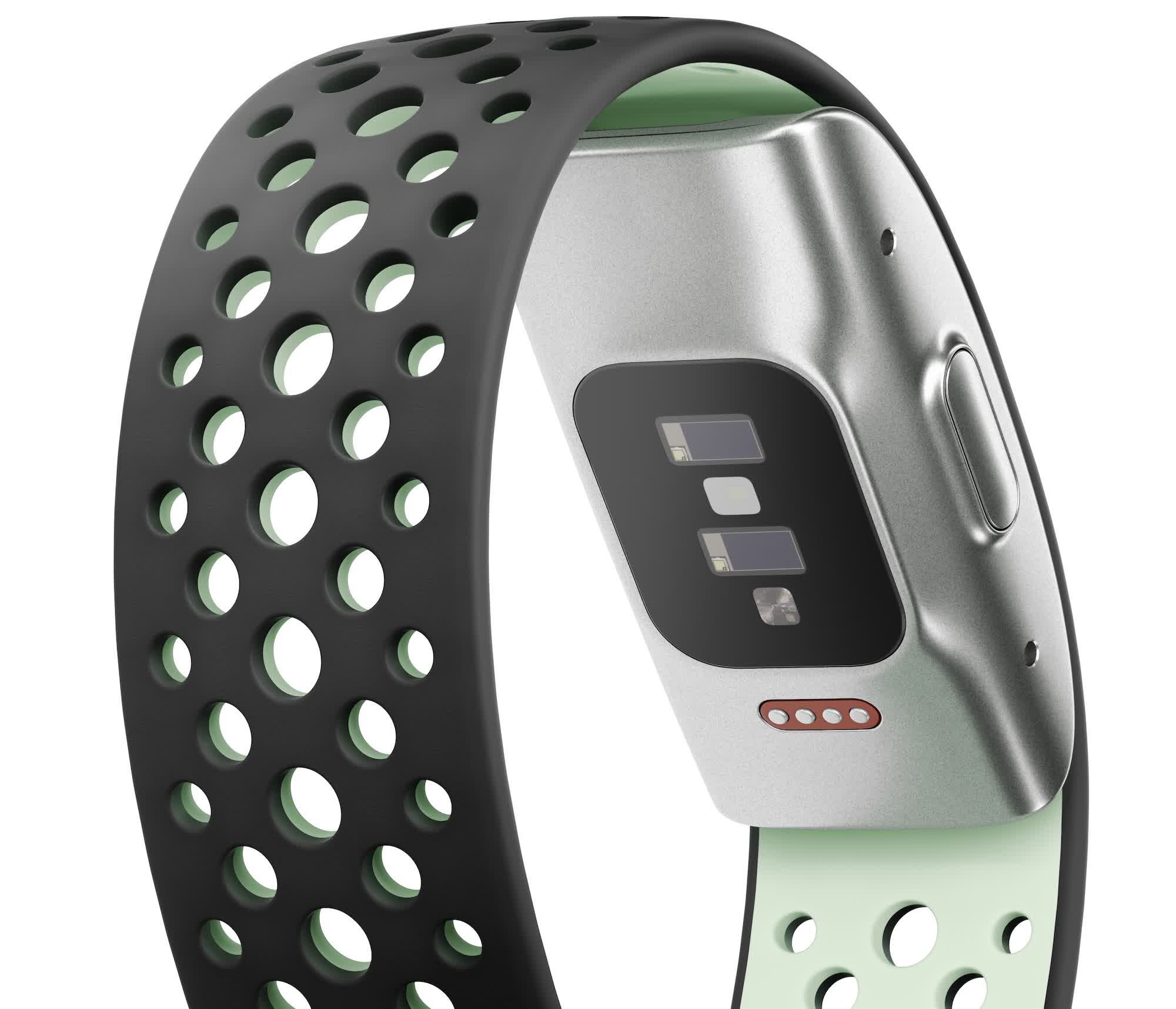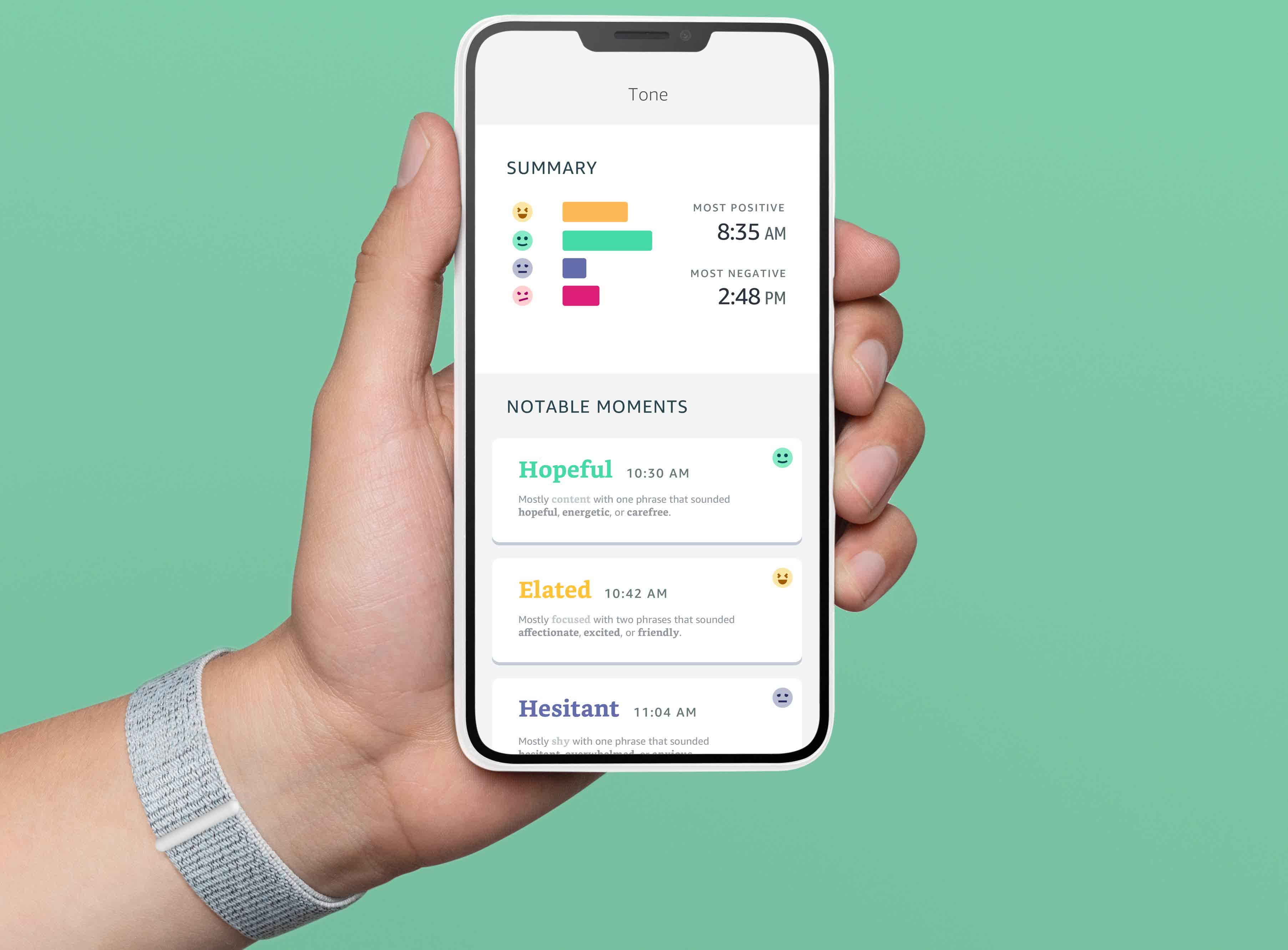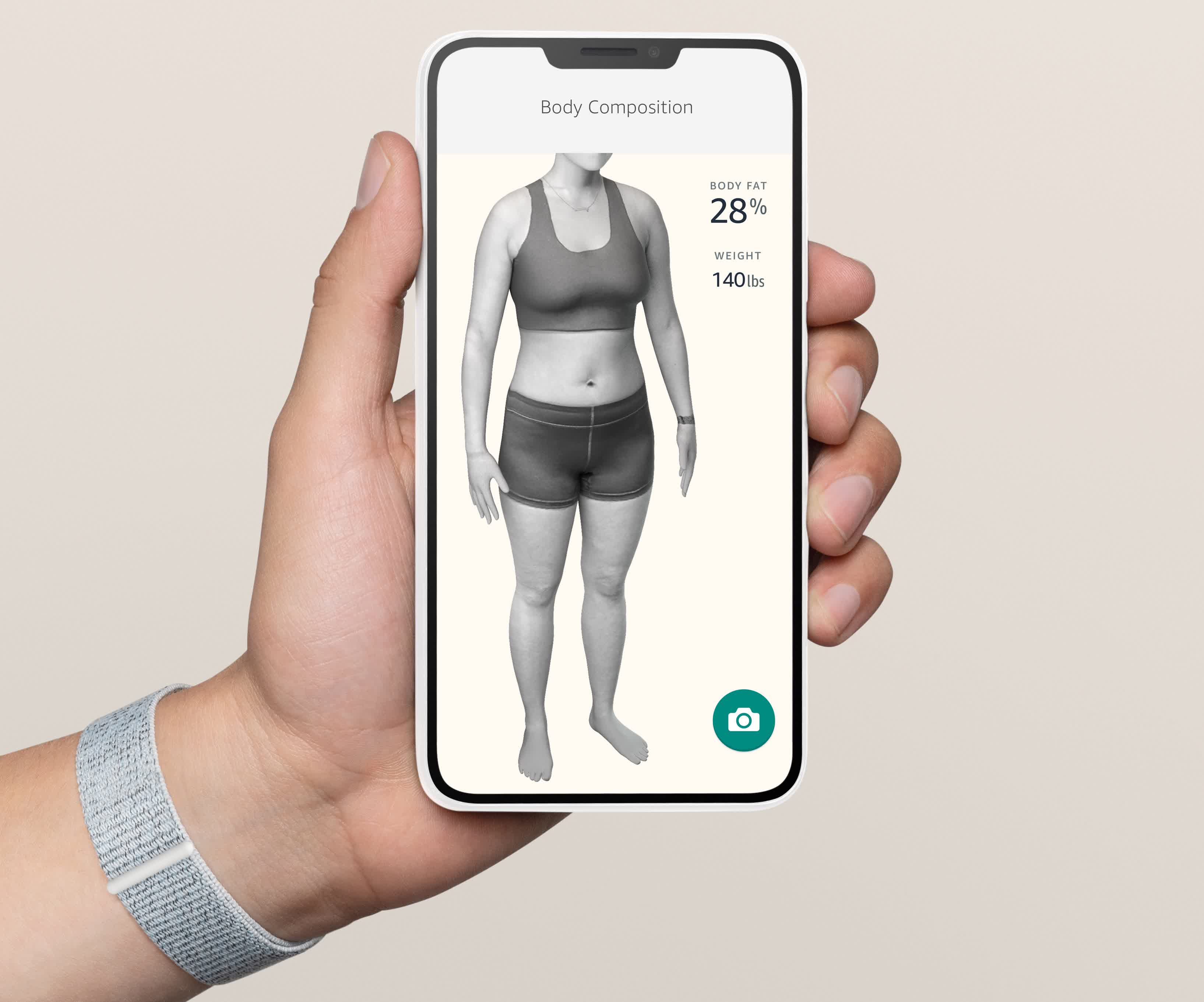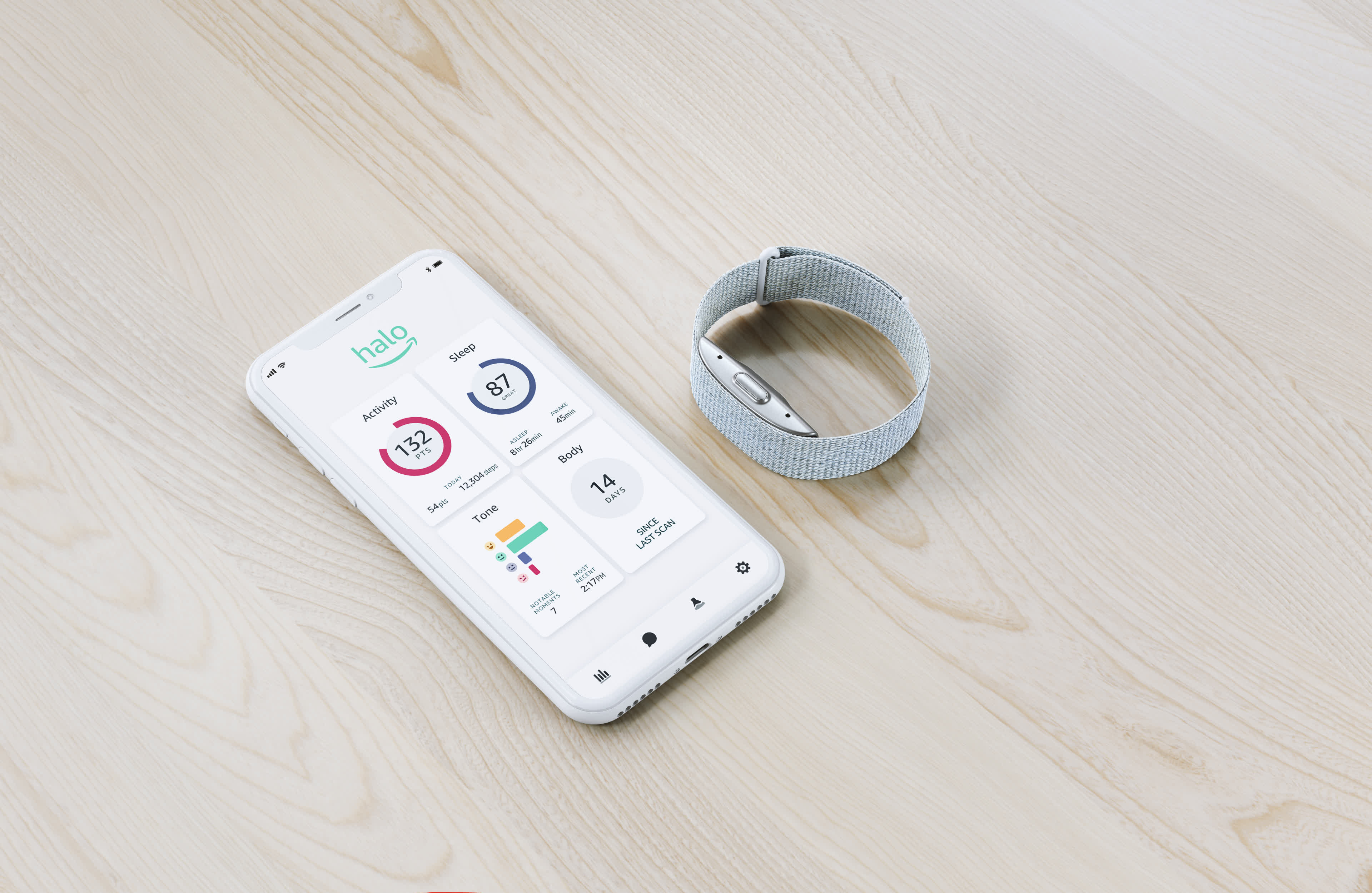Why it matters: After years of directing its hardware efforts at the smart home market, Amazon is exploring new ground with a health device and an associated service that are predicated on the idea that machine learning and computer vision can help you to more easily manage your health and fitness.
Amazon is entering the health and fitness wearable space with a device called Halo Band and a subscription service called Halo. The announcement comes hot on the heels of Fitbit's new Sense smartwatch and represents the retail giant's first foray into a market that's expected to reach $52 billion this year.
The wristband isn't anything new or revolutionary, and it sports a simple design with no screen, a status LED, and just one button. It includes the same assortment of sensors as most smart bands, such as an accelerometer, a heart rate sensor, a temperature sensor, and a dual microphone that can be disabled at any time using the button on the side of the device.

The microphone is a serious note on Amazon's part, as the company explains the device won't start listening until you explicitly opt in for it. Furthermore, all the voice data is processed on your phone and deleted immediately after that processing is complete. This shouldn't come as a surprise, as the recent wave of government scrutiny has made privacy one of the top priorities at the company – even as its policies and privacy tools have seen marked improvements over the last year.
The Halo Band is meant as a simple device with no notifications, water resistance and a battery life of up to one week, depending on your activity level. Where it gets interesting is that you can use its microphone to make intermittent recordings of your voice, and Amazon's speech processing algorithm is supposed to derive relevant wellness information from the tone of your voice.

The way it works is that it analyzes the pitch, rhythm, tempo, intensity in those recordings to get an idea about the "positivity and energy of your voice." The associated smartphone app uses that to give you a daily summary of how you sounded to other people throughout the day. Amazon believes this can make you more self-aware and reveal ways to improve your communication and relationships with others.
All of this is part of the Halo subscription service, as is a feature called 'Body', which is Amazon's answer to the problem of measuring overall fitness level. The way it works is that you have to take four photos of yourself with light clothing. Then, an algorithm that's been trained on hundreds of thousands of images will recognize your body and use the information in the captured images to create a 3D model that can be manipulated with a slider to show you how you'd look if you gained or lost fat.

Amazon says the same algorithm is able to derive a good approximation of your fat percentage based on the overall shape of your body as well as looking at "hot spots" where fat deposits typically reside – the thighs, torso, and mid-back. The company claims this is not only more convenient than an X-ray absorptiometry test, but it can get just as accurate over time.
Again, the company stresses that the pictures are deleted immediately after they've been processed, while the resulting 3D model will be stored only on your smartphone. For those of you who don't care about Amazon storing your photos on their servers, you can opt in for a feature that will show you how much you're progressing over time.
If you're interested in the Halo Band, keep in mind that it does come tied to the $3.99 Halo subscription. For those of you who are willing to enroll in the early access program, you can get the Halo Band for $64.99 along with 6 months of free Halo membership. Otherwise, the device will cost $99.99 when it becomes widely available.
